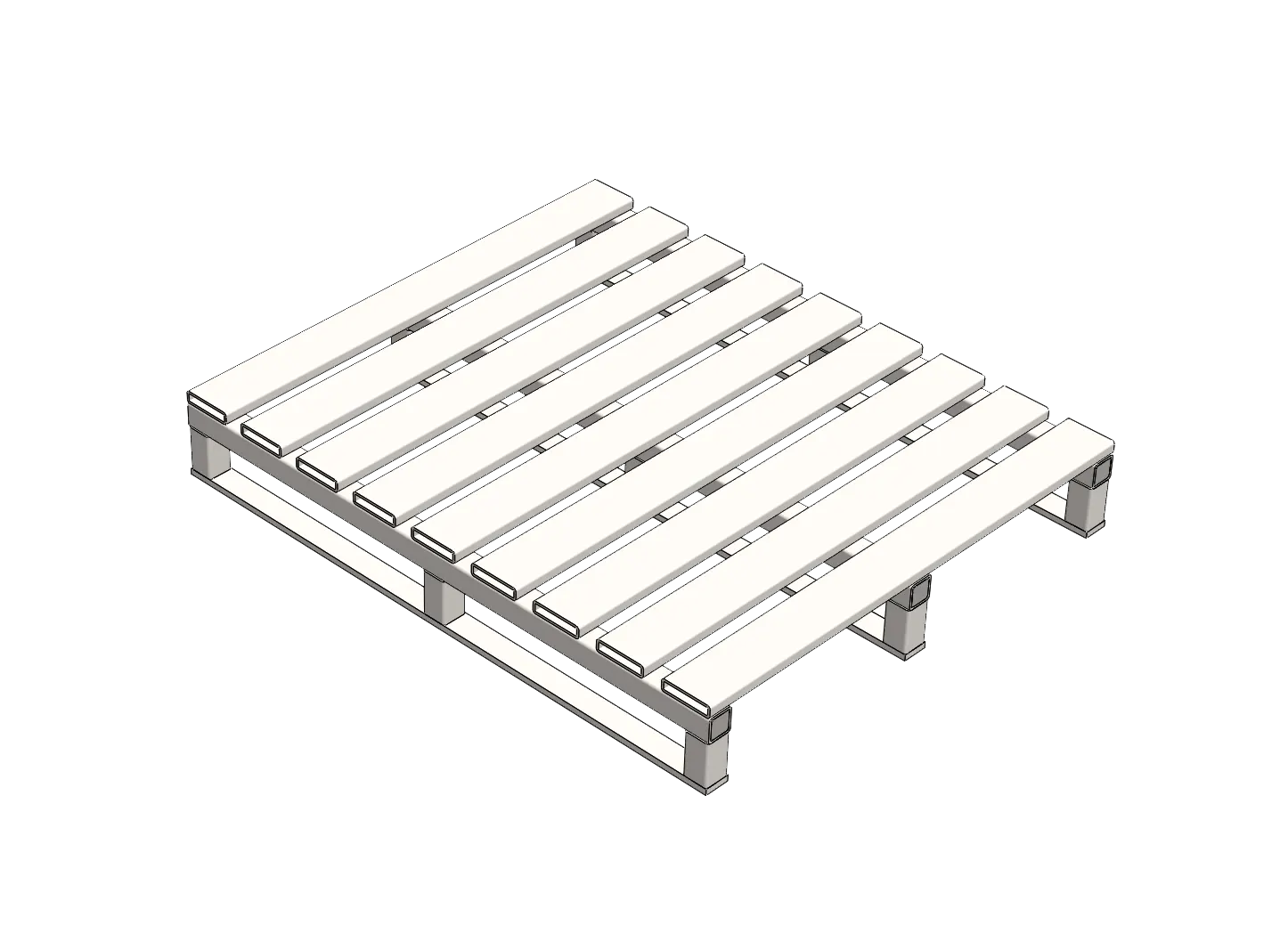What are metal skids?
Metal skids are specialized platforms or runners made of various metals such as steel, aluminum, stainless steel, and galvanized steel. They are designed to support heavy loads and provide a stable surface for materials, equipment, and machinery. These skids often have a flat top surface to accommodate the placement of goods, while their bottom surface usually features specialized features such as grooves or non-slip coatings to prevent movement during transport.

Metal skids are a crucial component in various industrial operations, providing stability, support, and load distribution. Understanding the different types of metal skids available, their benefits, and how they function can help businesses make informed decisions when choosing the right skids for their specific applications. In this article, we will explore all aspects of these skids, including their importance, types, benefits, working mechanisms, selection factors, key features, installation and maintenance, misconceptions, and a few case studies showcasing successful industrial applications.
Importance of metal skids in industrial operations
Metal skids play a vital role in industrial operations across different sectors. They ensure safe and efficient transportation, storage, and handling of heavy goods, machinery, and equipment. By distributing the load evenly, these skids help prevent damage to the transported goods and ensure stability during movement. They also protect against wear and corrosion, extending the lifespan of both the skids and the materials being transported.
Types of metal skids
There are several types of metal skids available on the market, each with its own unique properties and applications:
-
Steel skids: These skids are known for their exceptional strength and durability, making them the go-to option for heavy-duty industrial applications. Steel skids are highly resistant to impact, wear, and rust, making them suitable for harsh working environments.
-
Aluminum skids: Aluminum skids are lightweight yet robust, providing excellent strength-to-weight ratio. They are often used in applications where weight reduction is essential, such as aerospace or automotive industries. Also, these skids offer good corrosion resistance.
-
Stainless steel skids: Stainless steel skids are chosen for their superior corrosion resistance. They are ideal for applications where the skids may come into contact with chemicals, liquids, or moisture, such as food processing or pharmaceutical industries.
-
Galvanized steel skids: Galvanized steel skids are coated with a layer of zinc, providing exceptional resistance against corrosion. They are commonly used in outdoor or wet environments where exposure to moisture is high.
Benefits of using metal skids
Using metal skids in industrial operations offers numerous benefits:
-
Strength and durability: Metal skids are designed to withstand heavy loads and harsh working conditions without compromising their structural integrity.
-
Safety and stability: These skids provide a stable platform for goods and machinery, reducing the risk of accidents or damage during transport.
-
Corrosion resistance: Certain types of metal skids, such as stainless steel and galvanized steel, offer excellent resistance against corrosion, ensuring their longevity and the protection of transported materials.
-
Compatibility with forklifts: These skids are often designed with integrated features that facilitate easy handling and movement using forklifts.
-
Customization options: Metal skids can be customized to meet specific requirements, such as dimensions, load capacity, or surface coatings.
How do metal skids work?
These skids function in several ways to ensure efficient and safe transportation and storage:
-
Load distribution: Metal skids help distribute the weight of the load evenly, preventing concentrated pressure points that could lead to damage or product deformations.
-
Stability and support: These skids provide a stable and level platform for goods and machinery, reducing the risk of movement or tipping during transportation.
-
Protection against corrosion and wear: Depending on the type of metal used, skids can offer protection against corrosion and wear, ensuring the longevity of both the skids and the transported materials.
Factors to consider when choosing metal skids
When selecting skids for industrial applications, there are several key factors to consider:
-
Load capacity: Determine the maximum weight the skids need to support to ensure they can handle the desired load without compromising safety.
-
Durability: Assess the durability requirements based on the expected working conditions, including exposure to impact, moisture, chemicals, or extreme temperatures.
-
Size and dimensions: Consider the dimensions of the skids to ensure they fit within the available space and can accommodate the size of the goods to be transported.
-
Environmental factors: Evaluate the working environment to determine the necessary level of corrosion resistance or other specialized features required for the skids.

Key features of metal skids
Metal skids often come with specific features to enhance their functionality and usability:
-
Non-slip surfaces: Many skids have non-slip coatings or specialized surface textures to prevent the movement of goods during transportation.
-
Forklift compatibility: These skids can be designed with integrated features that allow for easy handling and movement using forklifts.
-
Customization options: Metal skids can be customized to meet specific requirements, such as adding additional features or altering dimensions.
How to choose the right skids for your application
To choose the right skids for your application, follow these steps:
-
Assess your weight and load requirements: Determine the maximum weight the skids need to support to ensure they can handle the desired load.
-
Consider the nature of your goods: Take into account the size, shape, and material of the goods to be transported, as well as any specific handling requirements.
-
Evaluate the working environment: Consider environmental factors such as exposure to moisture, chemicals, or extreme temperatures when selecting skids with the appropriate corrosion resistance or other specialized features.
-
Determine the necessary dimensions and specifications: Measure the available space and ensure the skids fit within it while accommodating the size and dimensions of the goods. Also, consider any additional features or specifications required for your application.
-
Seek professional advice if needed: If you are unsure about the selection process, consult with experts or suppliers who have experience in providing these type of skids for industrial applications.
Common misconceptions about metal skids
There are a few common misconceptions about these skids that are important to address:
-
Too heavy: While these skids can be heavy due to their robust construction, their weight is justified by the strength and durability they provide.
-
Prone to corrosion: While certain types of metal skids may be more susceptible to corrosion, using appropriate materials and coatings can greatly enhance their corrosion resistance.
-
Expensive: While initial investment costs may be higher compared to alternative materials, these skids offer long-term durability and longevity, making them more cost-effective over time.
Metal skids vs. other material options
When comparing metal skids to other material options such as wood or plastic, consider the specific requirements of your application:
-
Wooden skids: While wooden skids may be cheaper initially, they are not as durable or resistant to wear and corrosion as metal skids.
-
Plastic skids: Plastic skids are lightweight and offer good resistance to chemicals and moisture. However, they may not have the same strength or load capacity as metal skids.
Conclusion
Metal skids are essential components in various industrial applications, providing stability, support, and load distribution. Understanding the different types of metal skids, their benefits, and the factors to consider when choosing and maintaining them can help businesses optimize their operations.
By selecting the right metal skids for their specific requirements and following proper installation and maintenance practices, businesses can ensure safe, efficient, and durable transportation of goods and machinery.






